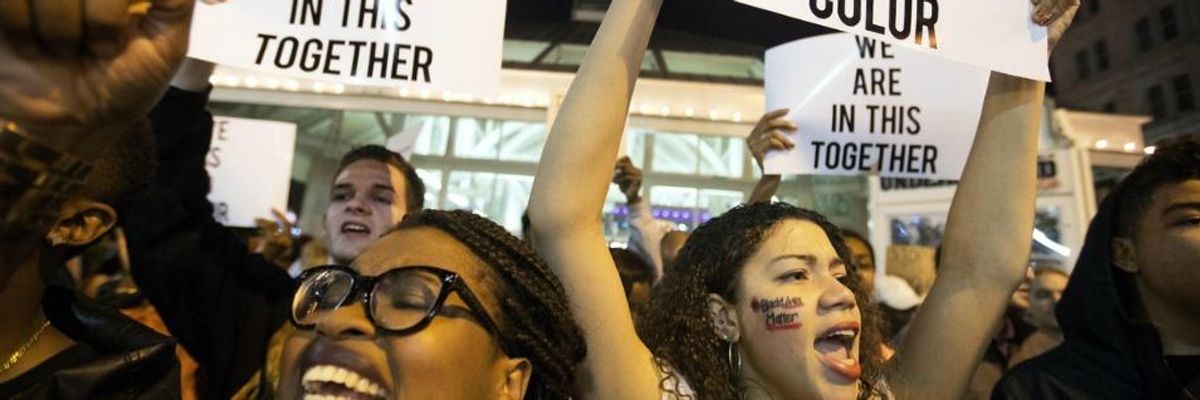
Diamond Nimene, left, and Samaria Muhammad, right, chant with fellow protesters in Atlanta on Thursday during a demonstration against the deaths of two unarmed black men at the hands of white police officers in New York City and Ferguson, Missouri. (Photo: AP/David Goldman)